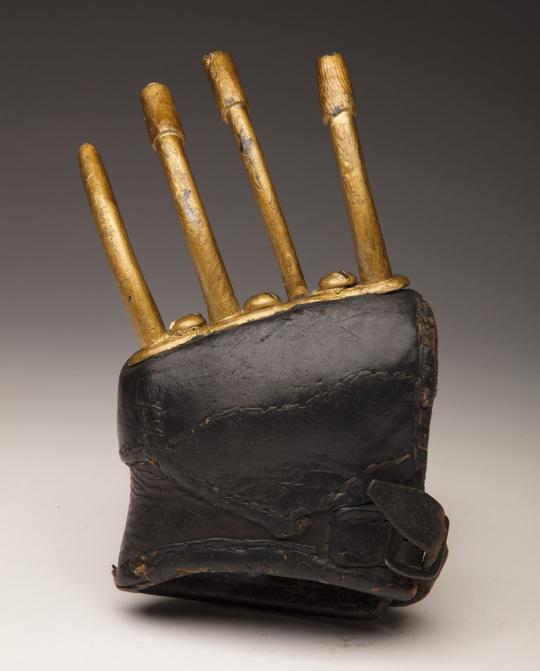- Home
- Our Stories
- #Shortstops: Give him a hand
#Shortstops: Give him a hand
The 2018 coverage of 8-year-old Hailey Dawson and her goal to throw out the first pitch at each of the big league ballparks with the help of her 3-D printed hand has proven to be one of the most inspiring and relatable side notes in baseball news.
Hailey’s story is reminiscent of another similar account, illustrated by a much more rudimentary prosthetic which has been in the Museum’s collection since 1944.
Ernest L. Blystone, a young man from Ardara, Pa., donated his prosthetic hand to the Museum as an example of the ingenuity and perseverance of one who struggled with a physical challenge but who did not let it define his everyday life.
Hall of Fame Membership
There is no simpler, and more essential, way to demonstrate your support than to sign on as a Museum Member.
At the age of 18, Blystone was involved in a railroad accident which left him with a broken hip, pelvic bones, right arm and left ankle. In addition, four fingers were amputated from his left hand. With such extensive injuries, his doctors gave him only a few hours to live, but, defying the odds, Blystone was able to walk unaided from the hospital more than a month later.
Healed from most of his internal injuries, Blystone still had to contend with his permanently damaged hand. Unwilling to give up playing baseball, Blystone fashioned a makeshift hand from leather and metal so that he could continue to play the sport he so loved.
He also started to develop a peculiar skill which would eventually bring him a small level of fame in the years to come: Microscopic penmanship. Soon, Blystone was excelling at his craft.
As reported in the September 1933 edition of The Editor, a publication dedicated to penmanship and business education, he broke the existing record of 400 letters by writing 1,200 letters on a rice grain. Later, he set another record by etching 1,615 letters on a single grain. Blystone finally succeeded in inscribing 2,871 letters on a single grain of rice by writing the word “coin” 707 times as well as his name, address and the year. He entered into Ripley’s 1932 “Believe it or Not” contest and won second prize, a Rockne Six Sedan.
Thus, in his mid-40s, Blystone traveled to the 1933 World’s Fair in Chicago where he was a part of Ripley’s Odditorium, a performance hall where fair visitors paid a fee to see the odd and entertaining. “Bly the Rice Writer”, as he was called, was joined by many unique colleagues. An article in the Washington Post from Dec. 31, 1933, made mention of a woman with hair that was seven feet long, a man who spoke without vocal cords and an unfortunate soul who could pop out his right eye.
Blystone succeeded in several more accomplishments in his microscopic writing career, including writing three lines of lettering on a human hair and ultimately conquered his own record of 2,871 letters by inscribing 14,164 letters onto a single grain of rice. One cannot help but admire Blystone for his refusal to allow his injured hand to stop him from doing the activities he loved and excelled at – whether it was playing baseball or scratching letters on a grain of rice, two hobbies that could not be more different.
Kayla Shypski is the collections coordinator at the National Baseball Hall of Fame and Museum




